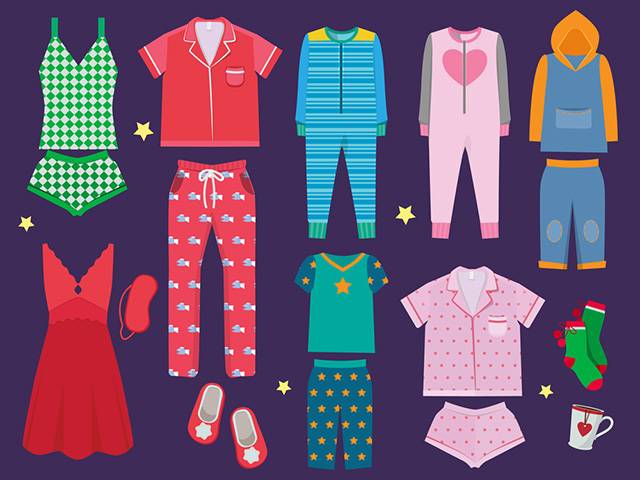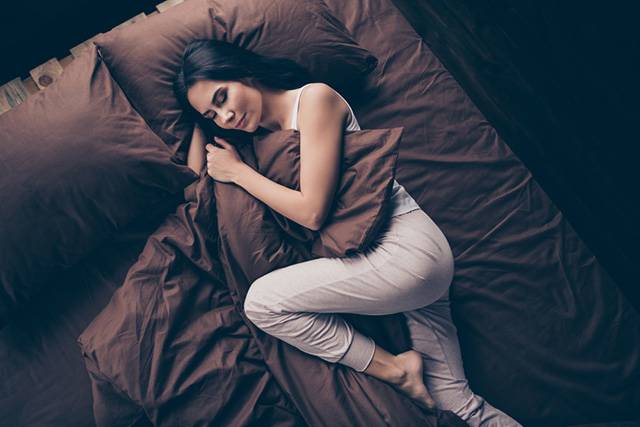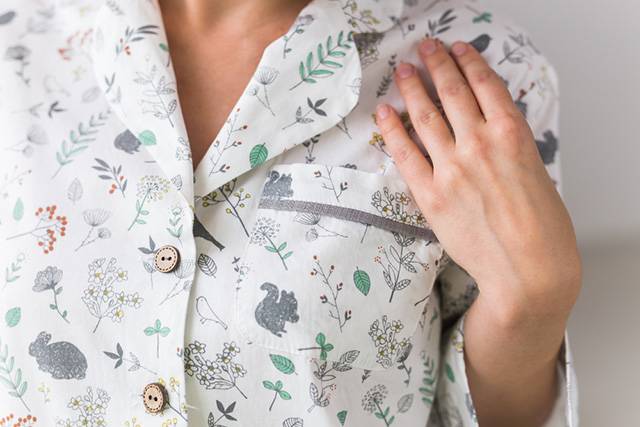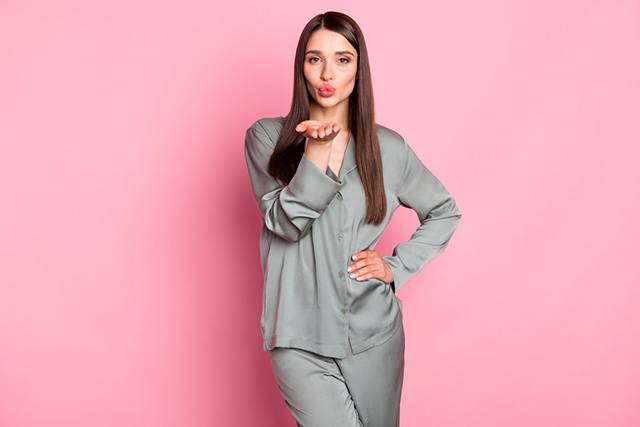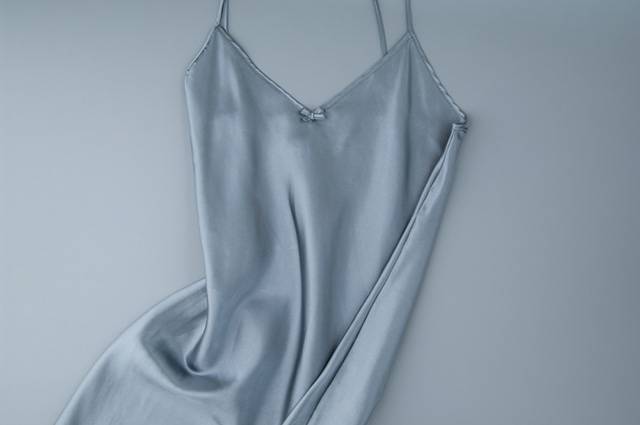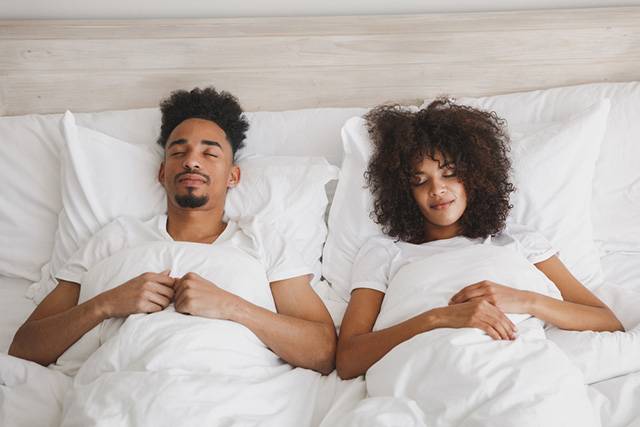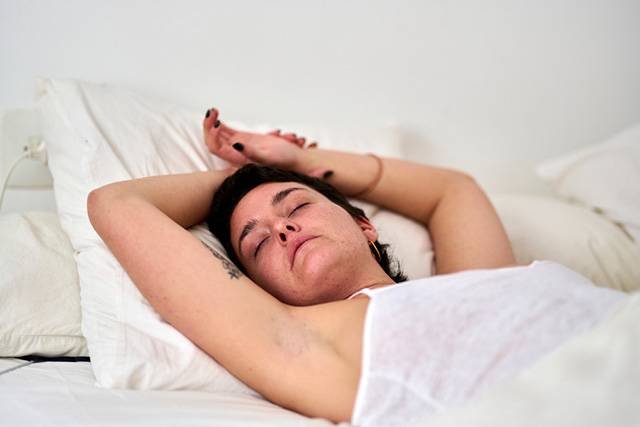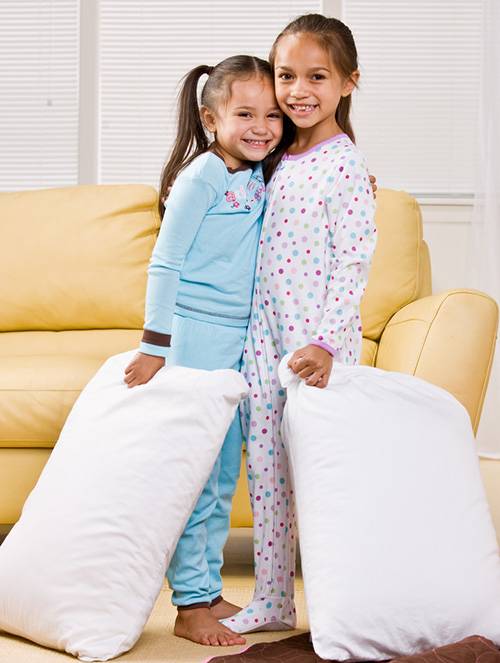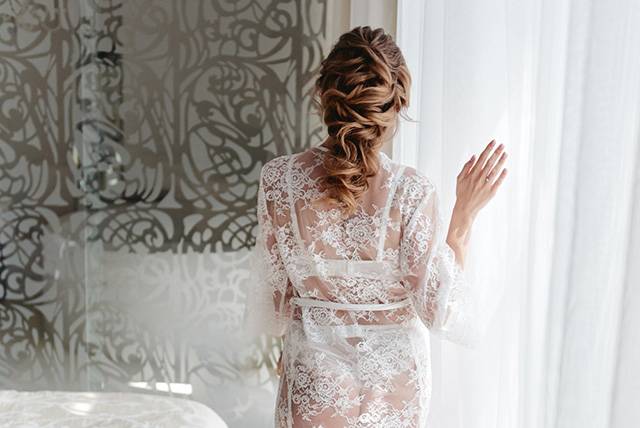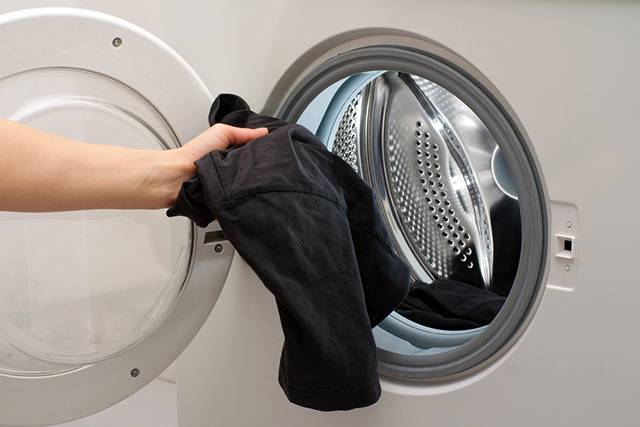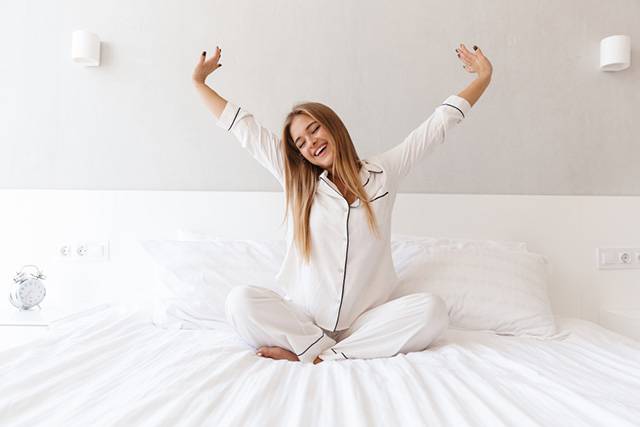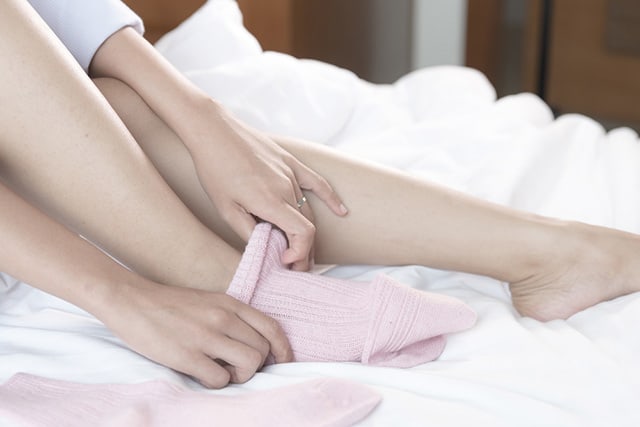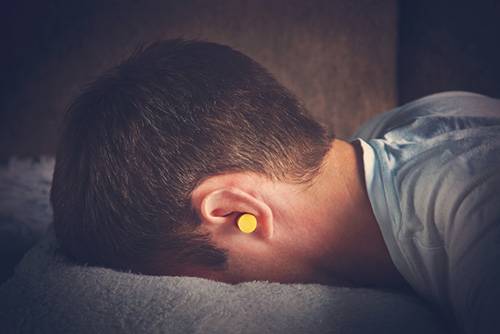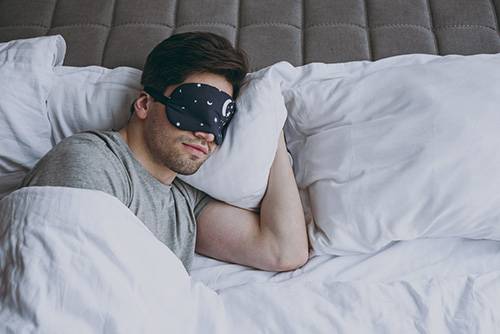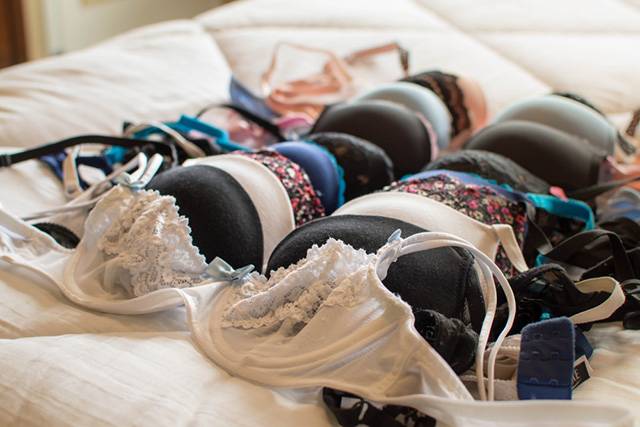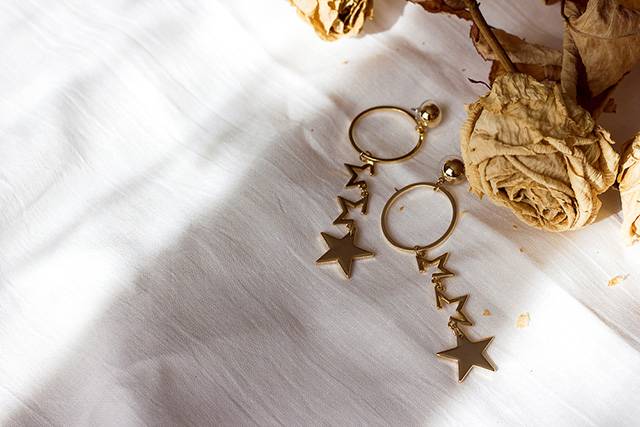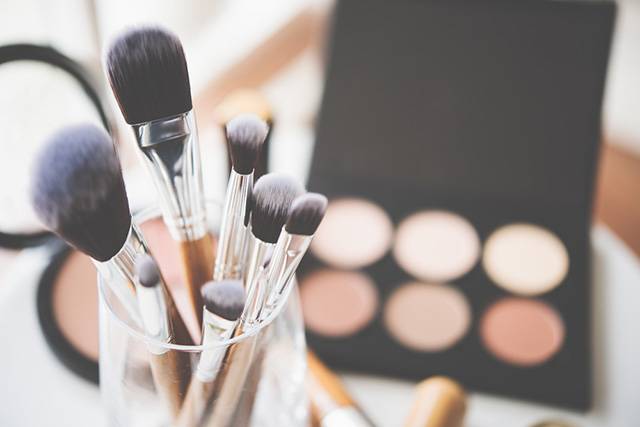There are plenty of factors that come into play when discussing sleep length and quality, from your sleep hygiene to the type of sheets you’re lying between each night. But there’s one factor in particular that’s often overlooked: Your jammie-jams.
We all have different ideals when it comes to our nightwear (or lack thereof). While some ladies may prefer slipping into something ‘more comfortable’ before slipping into bed, others are totally comfortable sleeping in a cotton tee and sweats. While some guys enjoy the cozy sophistication of matching PJ sets, others may opt to sleep in just boxers. And—more on the science later—we could all benefit from sleeping in the nude…
The most important thing is that your chosen nightwear is comfortable for you.
In this article, we’ll discuss more about what that means in terms of materials, fit, and style. We’ll also outline some other factors to consider when shopping for nightwear and clue you in on what to avoid wearing to bed!
Key Considerations
Before we get into the specifics regarding what to wear (or avoid) at bedtime, let’s discuss a few factors you should keep at the forefront of your mind while shopping around or scavenging through your closet.
You may want to read: How to Find the Best Lounge Pants for Women
— Comfort
This is the most critical factor in choosing your nightwear. Keep in mind that what one considers “comfortable,” another may not. There are three key characteristics that will determine how comfortable you feel in your nightwear.
— Material
We’ll discuss this in greater detail later, but for now, remember that it’s best to stick with natural materials and to avoid synthetic materials. Natural materials tend to be more breathable and easier on the skin than synthetic ones.
— Fit
Generally speaking, it’s better to sleep in loose clothing than in tight clothing. This is because tight clothing cuts off circulation, is not very breathable, promotes the ideal environment for bacterial and fungal growth, and can even inhibit melatonin production.
— Style
There are numerous styles of pajamas one could wear, from high-end silk or cashmere sets to an old tee and gym shorts. The type of pajama that best suits you will depend on your personal preferences. Here are some common styles to consider:
PJ sets
Especially among women, full pajama sets tend to be popular—and there are plenty of options to choose from! From matching short-sleeve cotton shirts and shorts to long-sleeve fleece sets, you can find something cute to serve you well in any season! In addition, you can opt for solid colors or cute patterns.
— Nightgowns
Nightgowns for women can be short- or long-sleeved and made from just about any material. They’re generally at least knee-length and can have either high- or low-cut necklines. Many women enjoy nightgowns for their airy, open feel in the leg area.
— Sleep shirts
A sleep shirt is like a more casual version of a nightgown, taking the form of a long, often oversized T-shirt. You can purchase a sleep-specific T-shirt or just use any old tee you have stored away in your closet. As long as it’s cute and comfy, you’re good to go.
— Sweats + whatever
Sweats: The ultimate versatile clothing item. You can work out, hit the mall, work from home, go to Taco Bell at 1 a.m., and get a good night’s sleep in them…just throw on a tank top or T-shirt to complete the look.
— Onesies
A popular type of onesie pajama is the footie pajama, which is designed to cover the entire body including the feet. These are especially cozy during the winter and provide excellent insulation.
— Negligees
A negligee is a sheer nightgown, often made of a soft material. The neckline is often low or plunging, and there is a strong sensual connotation associated with this type of women’s pajama.
Another factor to consider here is whether or not the pajama of your choice features buttons, clasps, zippers, or other forms of closure/decoration. For many people, these can easily become uncomfortable and make it difficult to get a good night’s sleep.
Price
Always keep your budget in mind when shopping for pajamas! You can get a quality pair of pajamas for anywhere from $30 to $70, though there are more expensive PJs (we’re talking hundreds of dollars here) that are made from higher-quality, more comfortable materials. Try to find pajamas that give you the best value for your budget, and don’t feel obligated to go high-end unless you can afford it.
Care
Another factor you should consider before splurging any amount of money is how much care and maintenance the PJs will require. Materials like cotton, bamboo, and polyester tend to be easy to maintain (i.e., just throw them in the washer and dryer) while others require more care (i.e. dry-cleaning or hand washing).
What to Wear
When figuring out what you should wear to bed, comfort should be your number-one concern. Wearing clothing that 1) feels soothing on your skin and 2) helps you maintain an ideal body temperature is one of the best ways to ensure a good night’s sleep.
Best PJ Materials for Sleep
The most important factor here is the material of the pajamas you’re wearing. Whether you sleep in a cute PJ tank with sweatpants, an old T-shirt with shorts, or a full-on PJ set, the overall comfort you experience boils down to what the clothing items are made from. Opt for pajamas that are made from natural materials (rather than synthetic materials), as they tend to be more comfortable and less irritating to the skin. That said, here’s a breakdown of some of the best PJ materials for sleep:
1. Cotton
Cotton is considered the gold standard for pajamas—and, indeed, many other types of clothing—and for good reasons. This material is known for its soft feel and excellent breathability, though it does leave something to be desired when it comes to insulation and moisture absorption. Cotton is a great choice of material for anyone who needs something easy on the skin and oh-so comfortable!
2. Linen
Linen is known for its combination of breathability and durability, and it’s also more absorbent and faster-drying than cotton. This makes it a great choice for anyone who wants a comparable level of comfort with greater convenience and longevity!
3. Bamboo
Bamboo fabric is similar to that of cotton, but with a few bonuses: better moisture absorption, a biodegradable design, and antimicrobial and hypoallergenic properties. This makes bamboo better for those with night sweats as well as anyone who shops with the environment in mind.
4. Silk
The obvious reason to wear silk to bed: The sex appeal. But on a more practical note, silk pajamas are known for their smooth feel on skin and their lightweight design—the perfect recipe for a delectable night’s sleep. Of course, silk pajamas tend to slip and slide on bedding, which not everyone appreciates while trying to get some shut-eye.
5. Fleece
Fleece pajamas are an excellent wintertime choice due to their high level of insulation and cozy feel on the skin, but it’s not recommended to wear them any other time of year. One can easily become too warm—hello, night sweats—while wearing these.
6. Flannel
For most people, flannel PJs are likely to be an even better wintertime choice than fleece. This material is much more breathable than fleece, while still providing the warmth you need in order to sleep snug and sound.
Wearing Socks
Bear with us. Wearing socks to bed comes with a range of benefits:
- Lower blood pressure
- Moisture absorption (for those with sweaty feet)
- Protection against dry, cracked skin
- Warmer, cozier feet
On that last point, studies have shown that keeping one’s feet warm at bedtime can help one fall asleep more quickly!
Keep in mind, however, that you should avoid socks that are overly thick or heavy (such as those made from wool or fleece). Wearing socks that are too warm or insulated can cause overheating, which equates to a poor night’s sleep. Instead, opt for lighter socks that will provide warmth and protection without being too “extra.”
Other Coverings
While certainly optional, some people find it beneficial to wear other coverings/accessories to bed in addition to (or in lieu of) their pajamas.
— Ear plugs
These may come in especially handy if you have a partner who snores, lives in a noisy neighborhood, or has a cat that likes to run full-speed through the house at 2 a.m.
— Eye masks
If you count yourself among those who sleep best with no light, you should consider getting an eye mask. These are specially designed to block out unwanted light, such as a nightlight, headlights flashing in your window, or the glow of your alarm clock. In addition, you can find them in a range of styles and designs, and they’re quite comfortable.
— Hair coverings
Covering your hair with a sleep cap before going to bed can help protect your hair from breakage and keep it looking A-okay until you wake up in the morning. Necessary? No. A good idea for those obsessed with their gorgeous locks? Yes.
What Not to Wear
Naturally, you should avoid wearing anything to bed that you find uncomfortable. While this will vary from one person to the next, experts recommend staying away from synthetic materials (like polyester, nylon, and spandex) as these tend to be harsher on the skin and less breathable than natural materials. Another factor to consider is that the PJ material you opt for should be season-appropriate—this means no wool or fleece in the summertime, for example.
More Things to Avoid
— Bras and underwear
Contrary to popular belief, wearing a bra to bed does not protect against sagging—but it can cause sleeping issues! Bras can cut off circulation, make it more difficult to breathe by putting extra pressure on your chest, cause fungal infections, and make quality sleep more difficult to attain.
Wearing panties or other underwear to bed is also known to cause problems, most notably in the form of bacterial or fungal infections.
— Jewelry
If you choose to wear jewelry to bed, you should prepare for a range of inconveniences: skin irritation, lost earrings, broken necklace clasps…need we go on?
— Makeup
Wearing makeup to bed is likely to 1) be generally uncomfortable, 2) cause clogged pores, and 3) promote eye irritation or infections. It’s important to remove your makeup with a gentle but effective makeup remover each night before bed.
— Tight clothing
Aside from being uncomfortable, tight clothing can also cut off your circulation in your body and even inhibit the production of melatonin, the hormone largely responsible for making you sleepy at night. To avoid these issues, you should opt for looser-fitting PJs.
— Buttons or snaps
Wearing PJs with buttons or snaps to bed can be very uncomfortable. Poking, prodding, rolling over onto a thin button edge…no thank you.
Sleeping in the Nude
Of course, there’s another solution: sleeping in the nude. If the do’s and don’ts of nighttime wardrobe just seem like too much trouble, you may find that sleeping with nothing on works for you.
- provides better circulation throughout your body.
- helps keep your body at a more optimal temperature for sleeping.
- promotes more freedom of movement.
- reduces your chances of getting a fungal or bacterial infection (especially for women).
- may give men a higher sperm count (compared to those who wear tight underwear to bed).
- keeps you cooler, which can result in a faster metabolism and better sleep.
- can promote a greater quantity of brown fat vs. white fat, which is important for weight loss.
- is sometimes reported to be more comfortable than sleeping in jammies.
- can foster a greater sense of intimacy with your partner.
- may help you feel more comfortable in your own skin.
Convinced yet? Even if you’re still on the fence, there’s no harm in trying, right?
Conclusion
Have you decided what your next PJ set is going to look like? Or have you decided to save your money and avoid the hassle by sleeping naked?
We hope this article gave you the information you needed to make this important sleep decision, and that you now have a better idea of what to wear and what to avoid at bedtime. If you still have questions—or a fav set of jammies you’d love to talk about—drop us a comment below.
Until next time, here’s to better, comfier sleepwear!
Photo credit: Motortion Films/Shutterstock; BNP Design Studio/Shutterstock;
Tero Vesalainen/Shutterstock; kanyanat wongsa/Shutterstock;
UfaBizPhoto/Shutterstock; tenenbaum/Shutterstock; PERO studio/Shutterstock;
Andrey_Popov/Shutterstock; Martin Novak/Shutterstock;
Krakenimages.com/Shutterstock; Iryna Imago/Shutterstock;
Zhuravlev Andrey/Shutterstock; ViDI Studio/Shutterstock; Alan-Smithee/Shutterstock;
AVAVA/Shutterstock; Imagentle/Shutterstock; Dean Drobot/Shutterstock;
diy13/Shutterstock; Jazmine Thomas/Shutterstock; Kachor Valentyna/Shutterstock;
Daria Minaeva/Shutterstock
